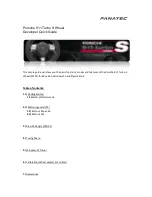
113
USING AND DRIVING
05
• Pedestrian detection fails due to
special clothing or other objects.
• Bends with small turning radius.
Precautions
• The predictive emergency braking
system cannot ensure zero collision.
In complex traffic, the system cannot
always clearly identify all the vehicles or
pedestrians. It may trigger unnecessary
warning or braking action for well covers,
iron plates or road signs.
• Make sure to observe surrounding traffic
conditions, AEB is not a substitute for
normal braking operations.
• Do not overly rely on the predictive
emergency braking system as this may
result in serious accidents. The system
is only an auxiliary safety tool. Drivers
must always keep a safe distance from
the vehicle ahead, control speed, and
be ready to brake or steer away when
necessary.
• The AEB system is activated when speed
reaches 4 km/h, but it can only reduce
vehicle speed when it does not exceed
45 km/h. Careful driving is always
required, because the system may not
be triggered correctly.
• When the ESC function is disabled or
the trouble light is on, the AEB system
cannot work normally.
• If the PCW function gives an alarm,
the driver must brake based on traffic
conditions to decrease vehicle speed or
steer away from obstacles.
• If the vehicle travels too close to the
vehicle ahead for too long, a safety
distance warning will be given. If the
vehicle ahead brakes suddenly there is a
high risk of collision.
• The system will not trigger AEB when the
driver is aware of an emergency warning,
but turns the steering wheel, accelerates
or brakes.
• The radar sensor may have a transient
function failure from limited detection
if the vehicle runs under special
conditions, such as circular ramps or
tunnels. The function may be recovered
by restarting the vehicle or driving under
normal conditions for a while.
• Sometimes the sensor or multi-
functional video controller detect dirt
or foreign matter on its surface. In this
case, a message will be displayed on
the instrument cluster and both PCW
and AEB will be disabled. The functions
will return after the sensor or camera is
cleaned.
• The pedestrian protection function is
limited by certain physical conditions
and it may not be able to take effect
within the 4-60 km/h speed range as
required. Drivers must always be aware
of their surroundings and use the brakes
accordingly. Pedestrian protection
warnings and preventive braking depend
on the actual situation.
• Pedestrian protection is only an auxiliary
tool and does not completely guarantee
pedestrian protection. Drivers must
always drive carefully.
• Under certain conditions, such as on
winding roads, the pedestrian protection
function may trigger unnecessary
warning or braking.
• In case of system failure due to radar
or video controller misalignment, the
pedestrian protection function may
trigger unnecessary warning or braking.
• The brake pedal becomes harder when
AEB is triggered. A large amount of
hydraulic pressure pressure will be
required to push the caliper in a short
time and there will be a sizzling noise.
Summary of Contents for ATTO 3 2022
Page 1: ...O W N E R S M A N U A L bydauto co nz ...
Page 5: ...4 ...
Page 9: ...8 ...
Page 10: ...ILLUSTRATION INDEX 01 Exterior 10 Dashboard Panel 11 Center Console 12 Door 13 ...
Page 15: ...14 ...
Page 36: ...DASHBOARD 03 Instrument cluster 36 ...
Page 47: ...46 ...
Page 48: ...CONTROLLER OPERATIONS 04 Car Doors and Keys 48 Seats 59 Steering Wheel 62 Switches 65 ...
Page 137: ...136 ...
Page 154: ...07 MAINTENANCE Maintenance Information 154 Regular Maintenance 159 Self Maintenance 163 ...
Page 181: ...180 ...
Page 182: ...WHEN FAULTS OCCUR 08 When Faults Occur 182 ...
Page 190: ...VEHICLE SPECIFICATIONS 09 Data Information 188 Tips 192 ...
















































